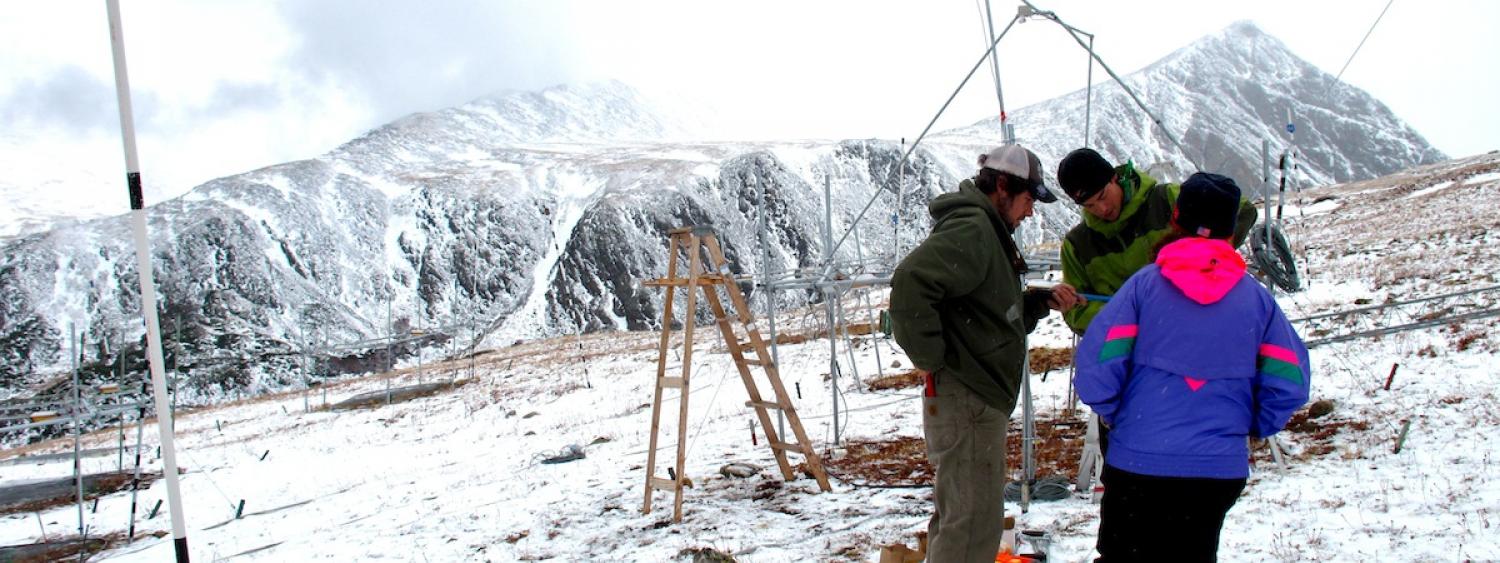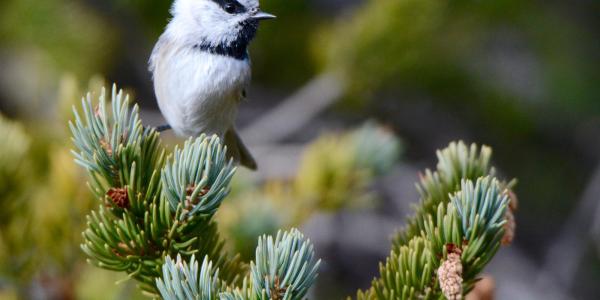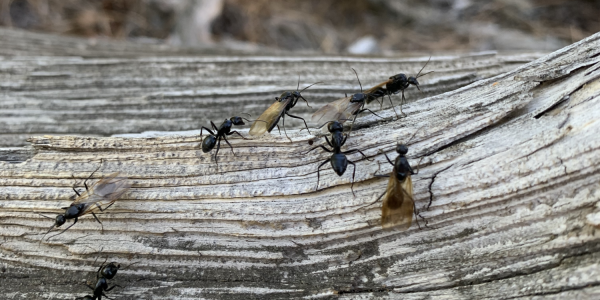
INSTAAR photo.
Every Tuesday during the winter, a group of intrepid researchers braves winds of up to 160 mph and temperatures as low as minus 20, hiking, skiing or snowshoeing four miles up Niwot Ridge west of Boulder to monitor the health of our high mountains.

Amy Miller (center) and Katie Suding (right), with other research team members, conduct a study involving nitrogen deposition on a tundra of Niwot Ridge. (Photo courtesy William Bowman, INSTAAR)
The measurements are part of an intensive study looking at ecological change on Niwot Ridge, both natural and human-caused, over decades. Now, thanks to a $6.8 million renewal grant to CU Boulder’s Institute of Arctic and Alpine Research (INSTAAR) from the National Science Foundation (NSF), research at the Niwot Ridge study area – one of NSF’s 25 Long-Term Ecological Research (LTER) sites in North America – will continue for another six years.
The Niwot Ridge site is invaluable to researchers. It is the only LTER site on the continent comprising alpine and sub-alpine environments. The site is northwest of Nederland, Colorado, includes Green Lakes Valley (part of the City of Boulder watershed) and abuts the Continental Divide at more than 13,000 feet in elevation. The site lies just uphill from CU Boulder’s Mountain Research Station, a part of INSTAAR.
Located at an elevation considered extremely sensitive to climate change, Niwot Ridge has been designated a United Nations Educational, Scientific and Cultural Organization (UNESCO) Biosphere Reserve.
A legacy of alpine research
The scientific record-keeping on Niwot Ridge started in the 1940s through visionary work by former professors like John Marr. In 1980, the Niwot Ridge location was established by NSF as one of the first LTER sites.
Professor Katherine Suding, an INSTAAR fellow and faculty member in the Department of Ecology and Evolutionary Biology, has been conducting research at the Niwot site for years and has been leading the Niwot Ridge LTER program since 2014
“The unbroken chain of data of we have from Niwot Ridge frames how we understand what is happening today,” says Suding.
In order to preserve the scientific integrity of the research, scientists use some methods and instruments that date back decades, such as chart recorders that have been documenting temperatures in the same way since the 1950s. These older instruments are paired with state-of-the art technology, such as complex sensor networks, working in tandem to measure long-term climate and environmental information.
“They are not museum pieces,” says Suding. “Knowing where we came from is essential for us to understand where we are going. We can’t leave the history behind.”
Signs of climate change
Another important factor in maintaining research continuity is the regularity of measurements. No matter what the weather may be, including hail, sleet or snow, researchers make their way up the ridge.
Researchers have determined that temperatures on the ridge have been warming over time and that snow is melting sooner, affecting the water supply available to downstream communities. They say the Arikaree Glacier on Niwot Ridge is thinning and could be gone within 20 years. Summers have been getting longer, providing challenges for some alpine and subalpine flora. Trees have less water available for them to grow, and sensitive alpine creatures like the potato-sized pika don't fare well in a warming environment.
Increasing nitrogen deposition on alpine ecosystems from a range of human activities continues to be monitored for its effects on plants, algae and soils, says Suding.
A hands-on, outdoor training lab for students
Suding says these large-scale trends can only be determined through research that takes place over many years. Context and a wealth of data are required to truly determine shifts in things as complex as climate and ecosystems.
“Not only are we able to study environmental and biological trends like early snowmelt or changes in the treeline that become apparent only over long timescales, but the Niwot Ridge site also provides a platform for shorter studies aimed at understanding why these changes are happening,” says Suding. For instance, researchers are starting experiments that speed snowmelt to determine what parts of the ecosystem are the most sensitive to climate change.
Niwot Ridge also provides hands-on training for dozens of graduate and undergraduate students each year.
“Being a part of the Niwot Ridge community is incredibly rewarding,” says undergraduate student Eve Beaury. “To be surrounded by such dedicated and intuitive scientists while carrying out my own research project was an experience that has helped me develop as an ecologist.”



